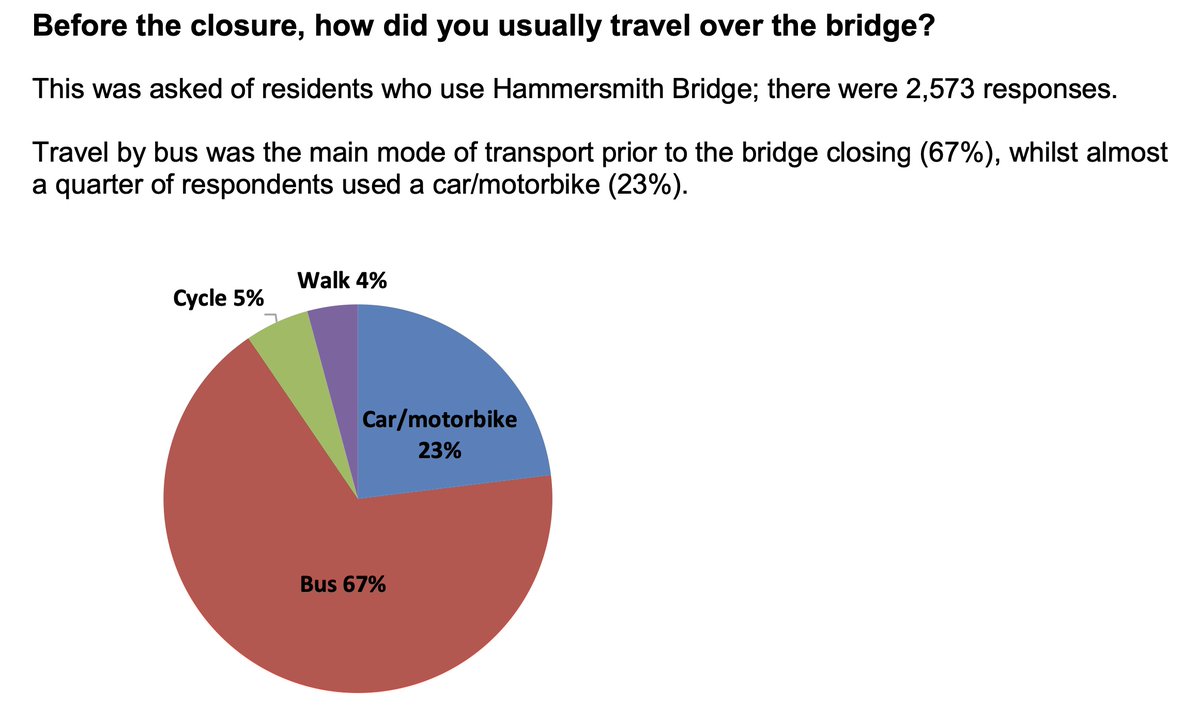
Andrew Pendleton
@AJPendleton
Policy, campaigns, strategy. @GlobalActPlan + consultancy. Formerly @NEF, @friends_earth and @IPPR. Comp boy in a public school world. Own views. He/him
03-01-2012 11:20:45
23,9K Tweets
4,2K Followers
4,1K Following



So 'how can we reopen #HammersmithBridge to traffic' is a miss-statement of the problem. Ergo, it's closures to traffic is not a symbol of a 'nothing works' Britain, though there are plenty of those, including our failure to build affordable homes.

So what is the problem statement for #HammersmithBridge ? I think it's...
'How can we get as many people across the bridge every day as possible?'


As Gareth Roberts, leader of Richmond Council recently tweeted, whether or not you want cars back on #HammersmithBridge , restoring the bus service is key. x.com/Gareth_Roberts…

There's a very good reason for Gareth Roberts to focus on restoring the bus services. In Richmond Council's own resident's survey, more than two-thirds of those who used the bridge before its closure to traffic crossed on the bus, not in a car:



Of course, on a fragile old beauty like #HammersmithBridge , this is a hard, but not impossible, problem to solve.
Credit to London Liberal Democrats they've been proposing that new legislation on pedicabs is used to instate a licensed pedicab link. mylondon.news/news/transport…

London Liberal Democrats So, as a local and some-time transport, energy and climate wonk, my conclusion is that most people have been asking the wrong question.
I suspect traffic will never return to #HammersmithBridge . This is partly political, partly economic, but mostly due to civil engineering.

So rather than waste column inches and angry social media posts this 5th anniversary, why not ask the real question:
'How many people can we get over #HammersmithBridge each day'. Walking, cycling, wheeling, on pedicabs?'
The answer might well be more people than before.